Turmoil in Syria continues after Assad flees country
Turkiye and the US have carried out strikes against terrorist targets on Syrian soil.
1733727673-0/Copy-of-Untitled-(8)1733727673-0-640x480.webp)
Despite the end of the Assad family's five-decade rule in Syria, violence persists as US and Turkish forces continue targeting terrorists.
Over the weekend, Turkish forces attacked US-backed Kurdish fighters in northern Syria,
On Saturday, fighting erupted in Manbij, a Kurdish-controlled city near the Turkish border, between two rebel groups: one supported by the US and the other by Turkey.
Kurdish sources reported at least 22 fatalities and 40 injuries among the Syrian Democratic Forces (SDF) which is the Syrian branch of the PKK/YPG terror group.
The clashes came ahead of a Sunday call between US Secretary of Defense Lloyd Austin and Turkish Defense Minister Yasar Guler.
Turkish-backed Syrian National Army (SNA) forces launched an assault on Manbij, supported by Turkish airstrikes and kamikaze drones that struck a Kurdish base.
The SNA now controls 80% of the northern Manbij district.
Despite promises from both the US and Russia to remove the PKK/YPG from the region, the group has remained entrenched in Manbij since 2016, defying multiple agreements made with Turkey.
The PKK, designated as a terrorist organization by Turkey, the US, and the EU, and its Syrian affiliate, the YPG, have used the power vacuum created by the weakening Assad regime to establish control along the Turkish border. In response, Turkey has deployed troops and collaborated with local groups like the SNA to prevent further PKK/YPG expansion.
President Joe Biden has also highlighted Syria’s period of uncertainty and risk, noting that for the first time in years, neither Russia, Iran, nor Hezbollah has a dominant role in the country. "For years, the main backers of Assad were Iran, Hezbollah, and Russia," Biden said. "But all three have become weaker, leading to their support collapsing."
Biden also confirmed that US forces conducted precision strikes against Daesh camps and operatives in Syria. He described this period as a historic opportunity for the Syrian people to build a better future but also stressed the risks involved. "The United States will work with our partners to manage the risk and seize the opportunity for a better Syria," he added.
Meanwhile, opposition groups in Syria have made notable territorial gains. By December 8, they had advanced into the southern suburbs of Damascus, forcing the Assad regime to retreat from key areas, including the Defense Ministry and the international airport. This rapid loss of control by the regime led to the fall of Damascus.
The swift gains of opposition forces highlight the instability of the Assad regime, which is struggling to maintain its grip on power.
Key Developments Leading to the Collapse
- Nov. 27, 2024: Armed rebel groups, including Hayat Tahrir al-Sham (HTS), launched a large-scale operation in the western countryside of Aleppo. The groups quickly gained control over key towns and villages, moving towards Aleppo city.
- Nov. 28-29, 2024: Armed groups seized large caches of regime weapons and vehicles and began advancing within one kilometer of Aleppo city, taking control of strategically important locations, including parts of the Idlib province.
- Nov. 30, 2024: Anti-regime forces seized most of Aleppo, including its international airport, previously under the control of the PKK/YPG, which had aligned with the regime in recent years. On the same day, opposition forces took control of Maarrat al-Numan, Khan Shaykhun, and Jarjanaz districts in Idlib, and the M4 highway.
- Dec. 1, 2024: The Syrian National Army (SNA) launched Operation Dawn of Freedom against PKK/YPG forces in northern Syria. This operation successfully captured the Tel Rifaat district center.
- Dec. 2-3, 2024: Opposition forces advanced in Aleppo and Idlib provinces, capturing additional areas in Hama and Deir ez-Zor. Civilians in northern Syria suffered casualties from regime and Russian airstrikes.
- Dec. 4-5, 2024: The Assad regime carried out forcible recruitment efforts in Damascus and eastern Ghouta while opposition groups made further advances in Hama, capturing 20 villages.
- Dec. 6, 2024: Anti-regime forces captured key districts in Homs, including Rasten and Talbise. Meanwhile, Syrian and Iranian forces began repositioning their troops to cope with mounting opposition pressure.
- Dec. 7, 2024: Armed opposition forces advanced into the southern suburbs of Damascus and began taking control of Homs. The city center in Homs fell to anti-regime groups.
- Dec. 8, 2024: The Assad regime lost control of Damascus after heavy protests and attacks on regime-held settlements. Protesters freed prisoners from Sednayah Prison, a notorious detention center known for torture. The regime’s collapse was further solidified as opposition forces announced Assad’s overthrow on state television, symbolizing the end of the Baath Party’s rule in Syria.

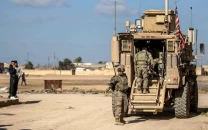
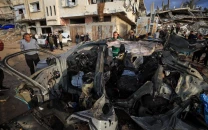


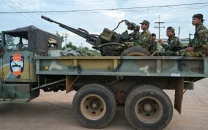
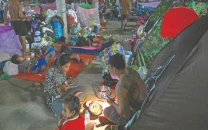


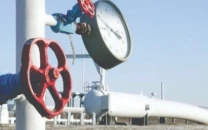









COMMENTS
Comments are moderated and generally will be posted if they are on-topic and not abusive.
For more information, please see our Comments FAQ